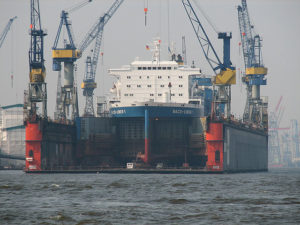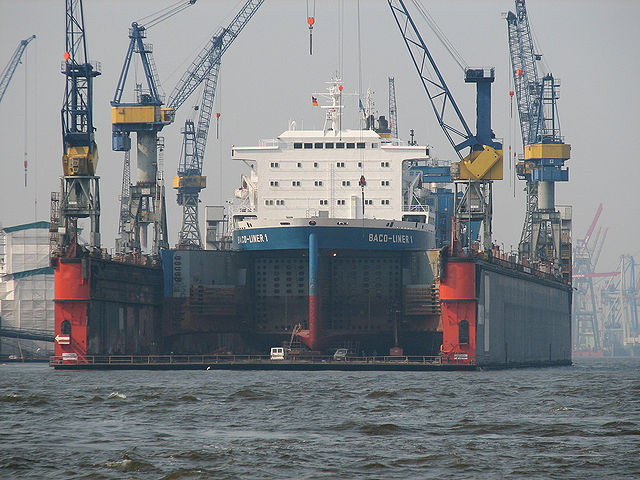 Vessel operating costs are expected to rise in both 2016 and 2017, with the container shipping sector seen logging the highest overall cost expansion for both years, according to results of a new survey by Moore Stephens.
Vessel operating costs are expected to rise in both 2016 and 2017, with the container shipping sector seen logging the highest overall cost expansion for both years, according to results of a new survey by Moore Stephens.
Key players in international shipping, predominantly ship owners and managers in Europe and Asia, expect vessel operating costs to rise by 1.9% in 2016 and by 2.5% in 2017.
Repairs and maintenance and spares are likely to see the most significant increase in overall costs for each of the two years, said the report. Repairs and maintenance cost is expected to increase by 1.7% in 2016 and by 1.9% in 2017, while expenditure on spares is predicted to rise by 1.7% in 2016 and by 1.8% in 2017. Drydocking expenditure, meanwhile, is predicted to increase by 1.5% and 1.8% in 2016 and 2017, respectively.
The outlay on crew wages is expected to increase by 1.3% in 2016, rising to 1.8% in 2017, with other crew costs thought likely to go up by 1.2% and 1.4%, respectively, for the years under review.
The increase in outlay for lubricants is predicted to be 0.8% and 1.4% in 2016 and 2017 respectively, and that for stores 1.3% and 1.7%. Meanwhile, projected increases in management fees are 1.0% and 1.2% in the two years under review.
The cost of hull and machinery insurance is predicted to rise by 0.9% and 1.1% in 2016 and 2017, respectively, while for P&I insurance the projected increases are 1.1% and 1.2%.
The predicted overall cost increases for 2016 were highest in the container ship sector, where they averaged 3.3% against the overall survey increase of 1.9%. In contrast, predicted cost increases for 2016 in the offshore sector were just 0.2%.
Container ships also headed the expected cost increases for 2017 at 3.4% compared to the overall survey average of 2.5%. Tankers featured in second place for both years at 2.5% for 2016 and 2.9% for 2017.
The mood of respondents generally was quite pragmatic, with many referencing the need to address such familiar problem areas as over-tonnaging, excessive competition, a paucity of finance, rising fuel costs and burgeoning regulation and legislation.
“An even greater discrepancy is expected between operating costs and freight rates,” said one respondent. “Owners will manage to make ends meet, but barely.”
The cost of meeting regulatory requirements was high on the list of concerns cited by respondents, one of whom noted that the cost of ballast water treatment plant will have to be taken into consideration in 2017 drydocking budgets.
Another respondent pointed out, “With the Ballast Water Management (BWM) convention coming into force in 2017, drydocking costs will increase significantly, depending on the type and size of ship involved.” And yet another warned, “As the quality and reliability of machinery and equipment in general deteriorates, then so the cost of maintenance increases.” Elsewhere it was noted, “The new international standards for limiting NOx, SOx and PM emissions from vessels will substantially increase operating costs.”
Respondents were also asked to identify the three factors that would most affect operating costs over the next 12 months. Overall, 20% of respondents identified finance costs as the most significant factor, followed by competition at 19%. Crew supply was in third place with 18%, followed by demand trends and labor costs at 13%, and the cost of raw materials came at 11%.
Richard Greiner, partner for shipping & transport, said repairs and maintenance costs as well as spares heading the 2016 list of operating costs may be due partly to the decision to undertake deferred repairs and maintenance rather than struggle to compete during this time of difficult industry and economic conditions.
Repairs and maintenance also topped the predicted operating cost increases for 2017, at 1.9%, ahead of crew wages, drydocking and spares, all at 1.8%.
Said Greiner: “This is not a surprise given predicted increases in global steel prices and the fact that regulation and legislation, mandated and enforced mainly by IMO and Port State Control respectively, are now so tight in terms of both safety and environmental preparedness and responsibility. Above all, shipping needs safe ships and safety-minded crews to stay afloat, and both come with a heavy price-tag.”
He said one highly influential factor behind the anticipated rise in drydocking costs, most notably in 2017, is the entry into force of the Ballast Water Management Convention in September 2017.
“The anticipated rise in crew wages and other crew costs, meanwhile, is arguably lower than anticipated, and there was indeed a feeling on the part of some respondents that, despite the entry into force of the Maritime Labour Convention 2006, wages could stabilise this year or even go down, due largely to the combination of a reduction in global trade and wider recourse to cheaper, less experienced manning alternatives.
He pointed out further that shipping faces a number of potentially costly compliance responsibilities, including the imposition of a 0.5% global cap on sulfur emissions with effect from 2020. Other operating issues include predicted increases in the price of fuel, albeit from comparatively low levels.
Photo: G H – Flickr





